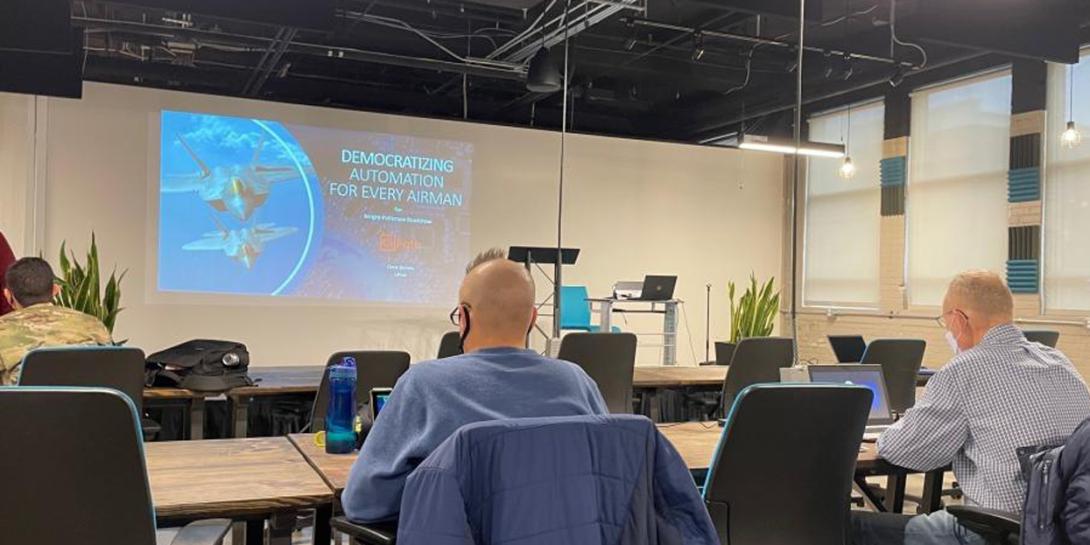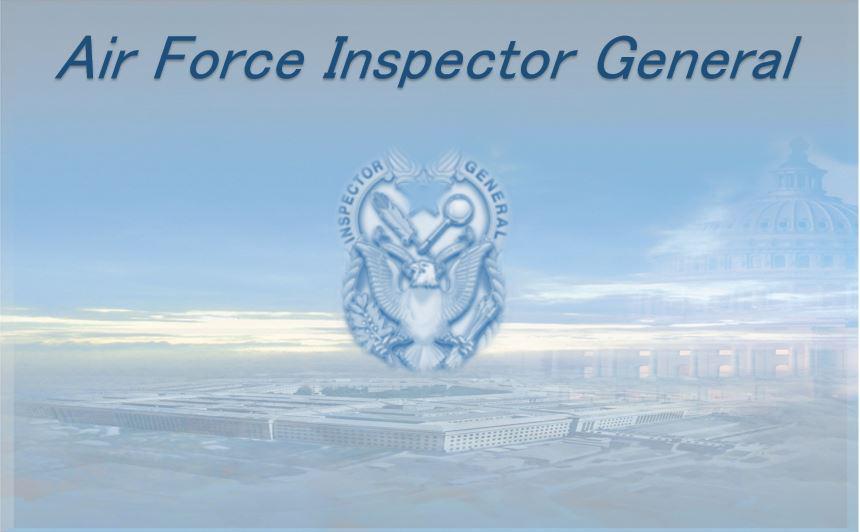Propelling Robotic Process Automation in the Air Force
Building off some early successes with robotic process automation, or RPA, the U.S. Air Force is deploying the capability on a greater scale. Assisted by the Air Force Robotic Process Automation Center of Excellence, the service most recently has been testing out the application of RPA in its Department of the Inspector General, or IG.
The employment at scale of automated software robots, or bots, to perform repetitive, rules-based processes can considerably reduce the workload of humans and decrease human error, said Lauren Knausenberger, chief information officer (CIO), Department of the Air Force. The planned expansion of RPA is a key part of the service’s draft automation strategy that Knausenberger and other leaders are currently preparing.
“We continue to use RPA more and more,” the Air Force CIO said, speaking last Thursday at the AFCEA NOVA chapter’s Air Force Industry IT Day in Crystal City, Virginia. “Actually, we have a draft automation strategy that we're working through right now that includes not just our RPA efforts, but how we can even use our current investments in Office 365, our current software or platforms to automate things that we're still doing manually even though we actually have the tooling and processes in place to not have to do it manually anymore.”
When the IG’s office came to Knausenberger about an indexing problem with their security forces, she was a little surprised, but she is seeing how leaders “more and more want to look for solutions in a different way,” she said. “So, I worked with [Lt.] Gen. [Warren] Berry, our logistics lead, and Lt. Gen. [Sami] Said, our IG lead. And it was really pretty apparent that robotic process automation can help with some of our case work.”
The CIO emphasized that RPA bots would not replace the work of case adjudicators. “You need a human to look at ‘what type of a crime this was, do I need to index this with the FBI, is there a real risk here,’” she clarified. “We want a human to do all that. But we don't need a human to necessarily log into 10 different databases and pull out information to have to manually go through 750,000 hard copy case files and figure out how do I dig through this backlog, or how do I prioritize, or let me keyword search through all of these things to figure out what I need to look at first. With just humans, we are never going to get there and that's why we have a backlog.”
Knausenberger added that the RPA Center of Excellence and the Program Executive Office Business Enterprise Systems are now working directly with the IG team to engage RPA bot solutions.
Everything comes down to preparing for JADC2 says CIO Lauren Knausenberger @usairforce @AFCEA @AFCEANOVA @Marion_CIO pic.twitter.com/TsxtMvvfav
— Kimberly Underwood (@Kunderwood_SGNL) December 16, 2021
In addition, the RPA Center of Excellence assisted the Air Force Materiel Command (AFMC) in hosting a Robotic Process Automation Roadshow two weeks ago at Wright Patterson Air Force Base, Ohio, with AFMC’s Accelerated Initiatives group. Gen. Arnold Bunch, USAF, commander of AFMC, is prioritizing the use of RPA and wants to “democratize automation” for all airmen. The Roadshow provided hands-on RPA training to airmen, many of whom had no prior understanding of RPA, according to a report from Kayla Prather, Air Force Materiel Command. They were able to build bots to perform specific tasks, reducing some workloads from hours to minutes, Prather noted.
“Our Airmen are bogged down with repetitive, monotonous tasks,” Matthew Roberts, RPA program manager, Air Force Robotic Process Automation Center of Excellence, said at the event. “The overarching mission of the RPA Center of Excellence is enabling all of our airmen and guardians through training events that teach our workforce how to use and apply automation tools.”
The service has already been using RPA in cybersecurity applications to identify cyber threats and in response launch firewalls; data management to pull information from document files; logistics to automatically input logistics information; and connecting legacy systems to create automatic data feeds for leaders' decision making, amongst other processes, Prather stated.
Knausenberger will continue to work from her end in the secretary of the Air Force’s office to expand RPA and get after the tasks that are really meant for bots to perform.
“We had a great vice chief’s challenge [by Gen. David W. Allvin for RPA], then did another round and asked airmen, ‘What is the thing that you just do not want to do anymore?’” she explained. “We were definitely referring to it as the ‘Dear AI robot, please come take over this part of my job’ challenge. It was just to kind of make fun of the other side, as sometimes people still worry that the automation is going to take our jobs. But there are some things that humans just don't want to do. It puts us to sleep. And so, we have some really great projects coming out of that at a pretty decent level of maturity.”
The Defense Information Systems Agency (DISA), a combat support agency, is also employing RPA internally to several of its processes in finance, public affairs, circuit management, security authorization and procurement, with an intent to build a robust RPA platform for greater use across the agency, Stephen Wallace, systems innovation scientist in DISA’s Emerging Technology Directorate, told SIGNAL. However, they are not yet ready to consider how the evolution of RPA capabilities into more intelligent bots equipped with decision-making qualities—with artificial intelligence and machine-learning components added to the bots—would work.
“One of the other challenges that the [Defense] Department is facing right now, not just us, is more from the unattended bots,” Wallace explained to SIGNAL. “We are deploying—and most of the rest of the department is working with—these attended bots, where the human is actually sitting there more or less in control of the bot. But in order to fully realize the benefits of RPA, we are going to need to move to unattended bots.”
Knausenberger echoed these concerns. “There are several pieces [to address],” she shared. “There's what the bot can do toward a problem, and there's the cultural piece. We have to communicate very clearly that this is not replacing the judgment that you have. No one wants a bot to replace the judgment that someone has in determining how serious a crime was or what kind of punishment there should be or indexing something in criminal justice with the FBI for an airman. But we do need our caseworkers to be able to process more than eight cases a day. And it is taking them too long because they have to go so many different places to get their information. And multiply that problem by hundreds across the DoD. Sometimes robotic process automation is a great answer. Sometimes it's a great interim answer on our way to get assessing what is wrong with our software that got us there in the first place. Sometimes RPA is just a way of seeing our picture better, on our way to what the real end solution is, which is probably better software. Those are the types of things that we're looking at.”
Lastly, the CIO asked industry to assist with RPA capabilities. “I think what I'd really love to have from industry is making things consumable,” she stated. “I'd like to get us to, ‘here are the products that are accredited for Air Force networks, and have them available and easily consumable in Cloud One. And let’s have industry be thinking as part of their solutions, ‘how do I use those enterprise services to help you?’”
The service noted that airmen interested in employing RPA should contact the Air Force Robotic Process Automation Center of Excellence at SAF.ARPA.COE@us.af.mil





Comments